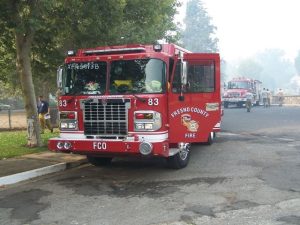There will be a meeting at 7:00pm Tenaya Elementary. Gary Wachner of the park service will be on hand to take questions and speak about some of the suppression efforts related to the Rim Fire. There is also a 2:00pm daily meeting at the Word of Life Fellowship in Mi-Wuk Village. Local firefighters will be on hand to answer questions.
EVACUATION GUIDELINES FOR TUOLUMNE COUNTY RESIDENTS
In Tuolumne County there are three types of evacuation warnings. Implementation of one or the other is dependent upon the actual or potential danger to the affected population as determined by the Incident Command Staff or the Board of Supervisors.
The Three Types of Evacuation are:
Evacuation Advisory
– Issued to the media to alert the public to potential evacuation orders. The advisory will contain general information on how to prepare for an evacuation.
Evacuation Warning
– Issued when an evacuation order is eminent. It includes the specific geographical area that may be evacuated and procedures to be followed.
Evacuation Order
– Issued when there is an immediate threat to life and/or property. The evacuation order contains specific geographic area to be evacuated and procedures to be followed.
Evacuation Information
During an emergency situation there are several places where you can find information regarding the status of the emergency, evacuations, and shelters. One of the places you can get current information about an emergency is through local radio stations.
Residents are encouraged to listen to one of the following radio stations during emergency situations.
KKBN 93.5 FM
KVML 1450 AM
KZSQ 92.7 FM
KOSO 93.1 FM (Modesto-Local EAS Station)
In the event of any type of disaster, the County will open up Citizen/Media Information Lines. These phone lines are staffed by trained personnel who will assist you with any non-emergency questions you may have during an emergency/disaster the phone number will be announced on the radio stations.
The number is (209) 533-5174 Should you need to report an emergency call, 9-1-1.
EVACUATION CHECKLIST
1. Remain Calm!
2. Inform family members, relatives and guests of the need for evacuation and procedures to follow.
3. Have a plan for reuniting family members if separated by the evacuation. If separated and there is no pre-planned meeting location, go to the assigned relocation site. Family members seeking evacuated persons should go first to the relocation site.
4. Lock doors and windows prior to leaving.
5. Take pets with you whenever possible, it may not be possible to reenter the evacuation area for several hours or days after you leave.
6. Consider taking the following items:
a. Medications needed by family members. (If left behind, obtain new prescription from doctor or pharmacy.)
b. Blanket for each family member.
c. Flashlight.
d. Credit cards or cash.
e. Change of underwear for each family member.
f. Battery operated radio.
g. In winter, heavy coats.
h. Personal papers or photographs that are important to the family.
7. When you leave your residence:
- a. Do not tow any other vehicle. The Sheriff’s Office shall determine whether trailering large animals in or out of the affected area will be authorized. Trailers used for any purpose other than evacuation of large animals is prohibited. Driving a motorhome out of the affected area is permitted, as long as it is not towed.
- b. Follow the designated evacuation route out of the area.
- c. Follow the directions of emergency personnel.
- d. If you will not be able to contact family members to let them know where you are going, go to the designated relocation center until contact is made. After family members are united or notified, you may go to any other location during the evacuation. Or, you may remain at the site.
Care will be provided by the Department of Social Services or the American Red Cross for evacuees. Stay tuned to a local radio station for updated evacuation information.
Evacuations are a traumatic event in the life of a family. Preparing your family in advance for the potential of evacuation reduces the anxiety. Remember, emergency personnel are trained to assist citizens in the event of emergencies.
Your cooperation with emergency personnel is important to a safe and orderly evacuation. Please do not attempt to reenter an evacuated area until authorities have assured it is safe to reenter.


